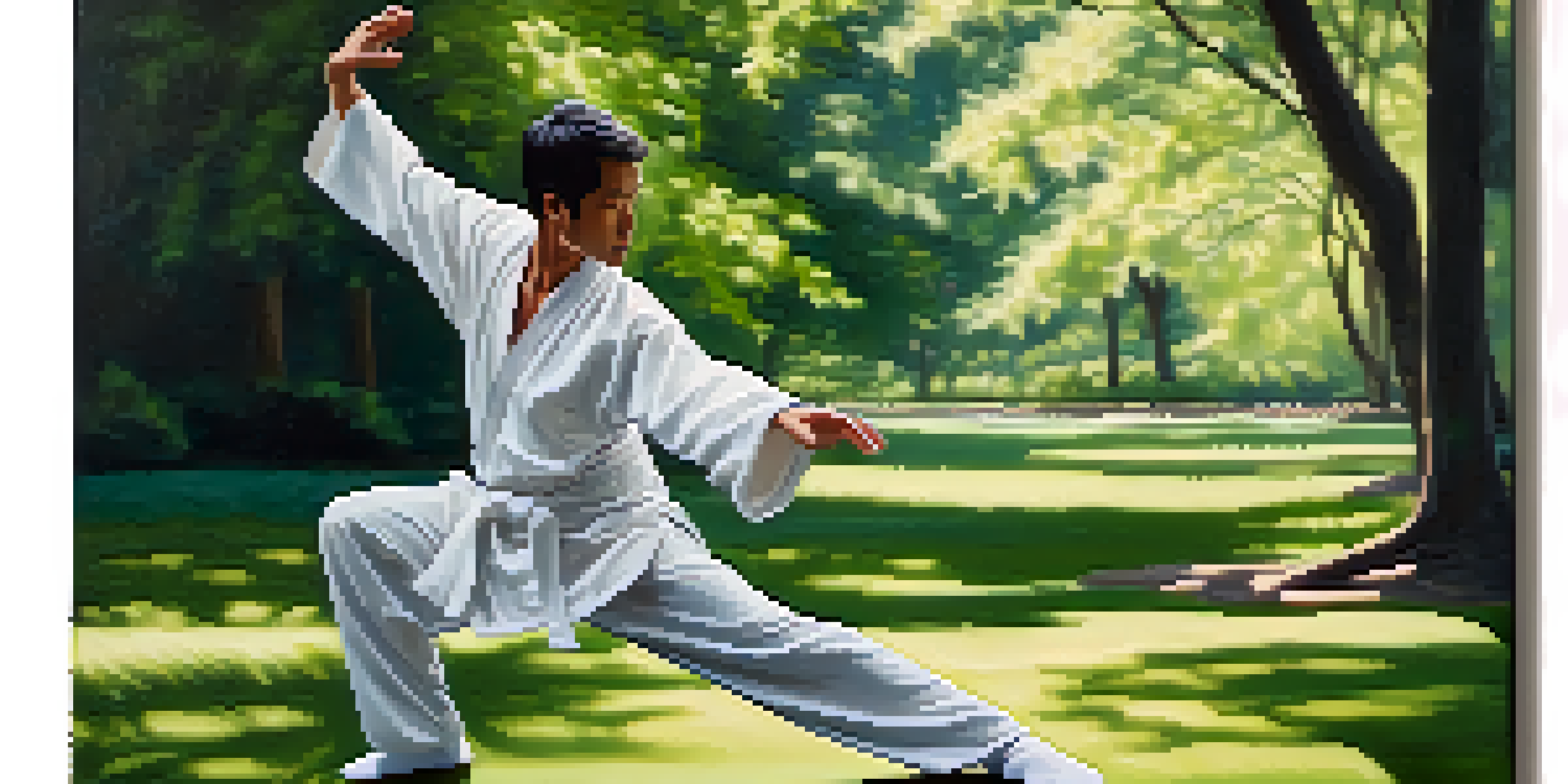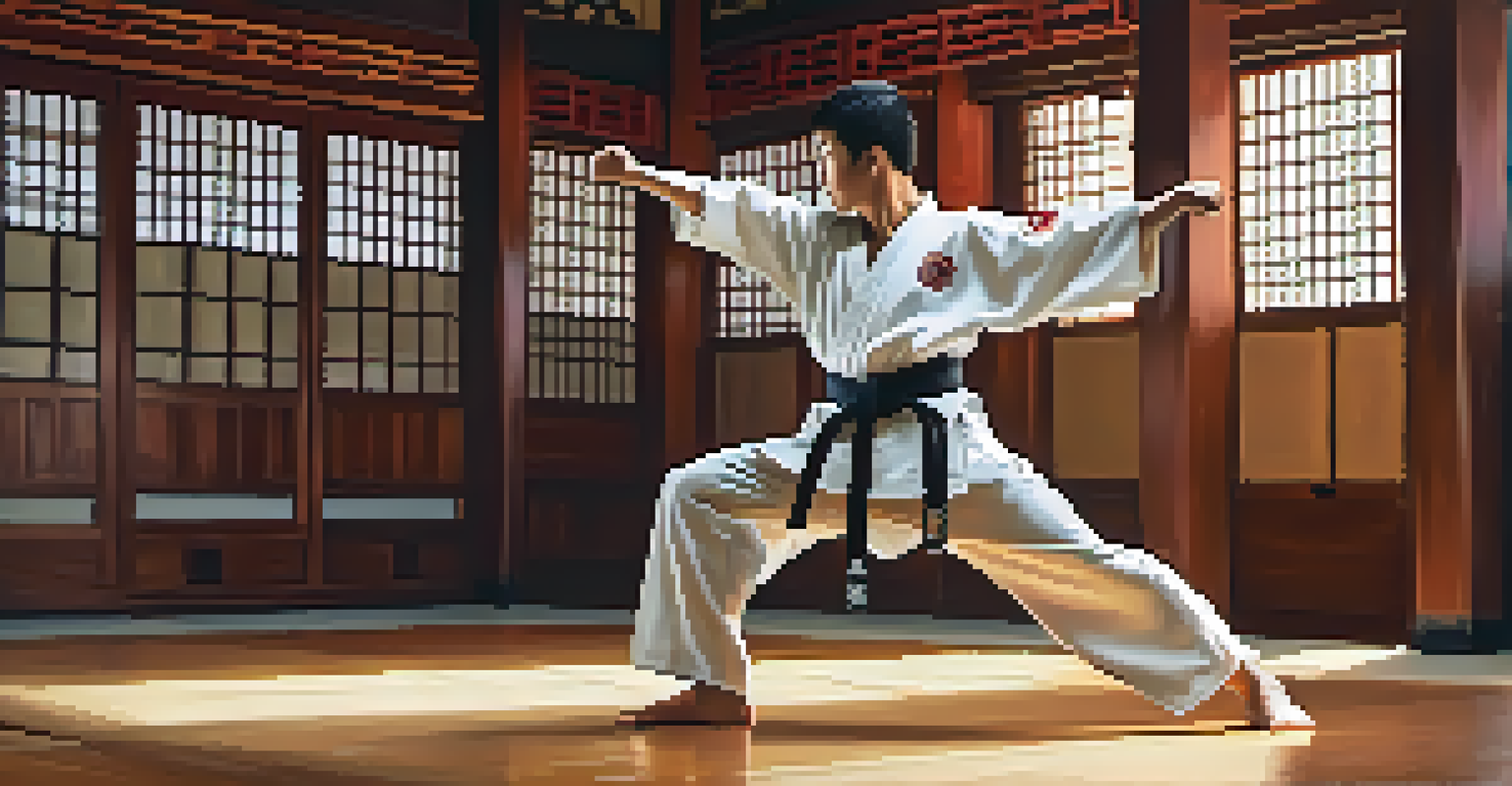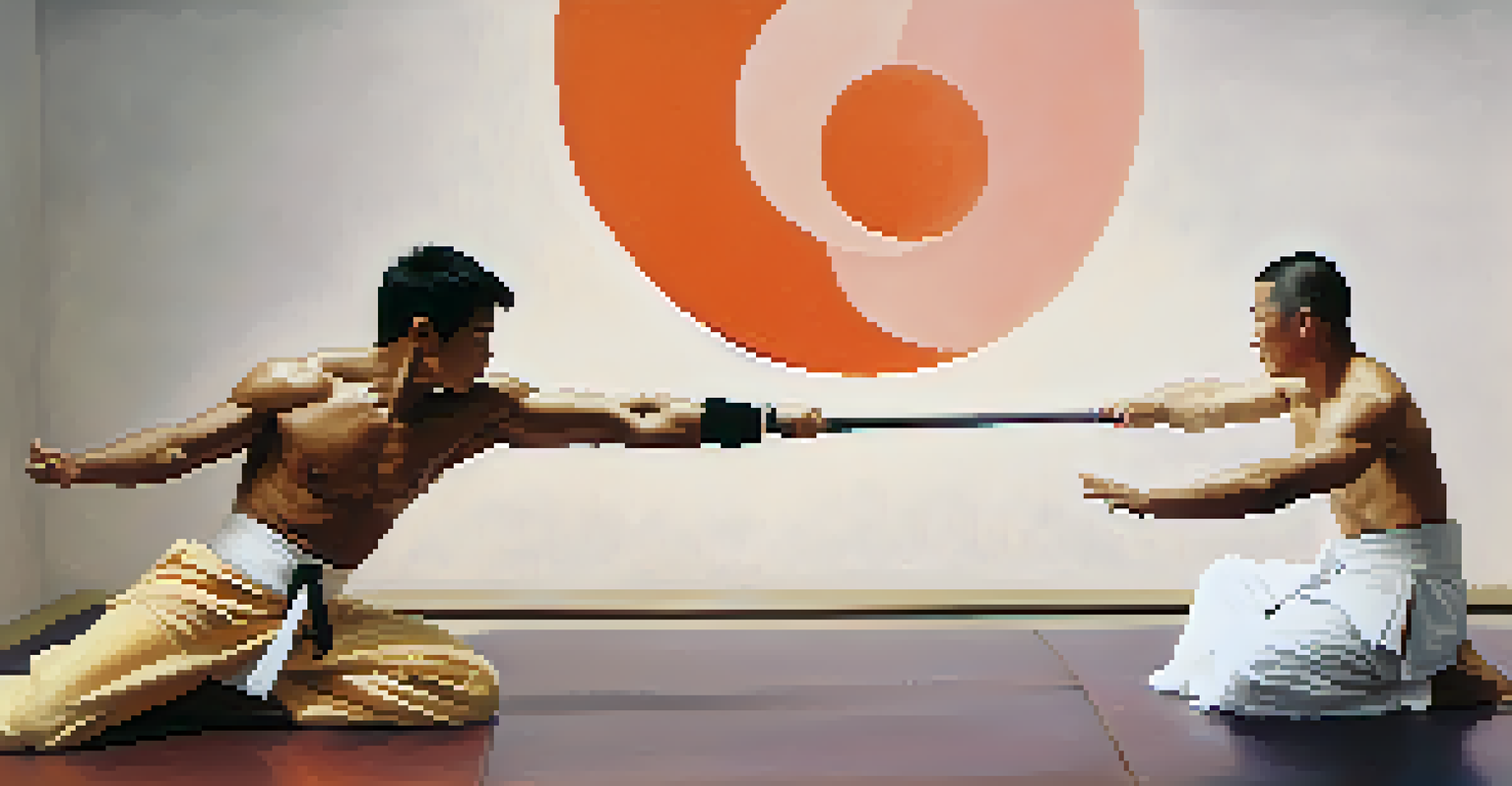The Concept of Yin and Yang in Martial Arts Movement

Introduction to Yin and Yang in Martial Arts
In martial arts, the concept of Yin and Yang serves as a guiding principle that emphasizes balance and harmony. Yin represents softness, receptivity, and the passive aspects of movement, while Yang embodies strength, action, and assertiveness. Together, they create a dynamic interplay that is central to many martial arts practices, from Tai Chi to Kung Fu.
In the midst of movement and chaos, keep stillness inside of you.
Understanding this duality is crucial for martial artists because it helps them develop a well-rounded approach to both technique and mindset. For instance, a fighter may need to embody Yin when defending or evading an attack, using fluid movements to avoid confrontation. Conversely, they might switch to Yang when executing a powerful strike or an aggressive maneuver.
This balance not only enhances physical performance but also cultivates mental resilience and adaptability. By embracing the principles of Yin and Yang, martial artists can navigate the complexities of combat, improving their overall effectiveness in various situations.
The Role of Yin in Martial Arts Movement
Yin plays a vital role in martial arts, especially in techniques that prioritize evasion and redirection. Movements driven by Yin often appear smooth and flowing, resembling water that bends and shapes itself around obstacles. This allows practitioners to conserve energy while effectively countering stronger forces.

For example, in Tai Chi, practitioners often utilize Yin movements to maintain balance and stability while their opponents attack. By yielding and redirecting energy, they can effectively neutralize an opponent's aggression without resorting to brute force. This skill of yielding is essential for developing finesse and control in martial arts.
Yin Embodies Softness and Flow
Yin represents the passive, flowing aspects of martial arts, emphasizing techniques like evasion and redirection.
Moreover, embracing Yin helps martial artists cultivate patience and mindfulness. By focusing on the subtle aspects of movement and energy flow, they learn to remain calm and composed, which can be particularly advantageous in high-pressure situations.
The Importance of Yang in Martial Arts Techniques
Yang embodies the dynamic and assertive characteristics of martial arts. This aspect is crucial when it comes to delivering powerful strikes, aggressive movements, or executing decisive actions in combat. Techniques that emphasize Yang are often characterized by speed, strength, and directness.
The best fighter is never angry.
For instance, in many striking arts like Muay Thai or Boxing, Yang movements dominate when executing punches or kicks. These techniques require not only physical strength but also a clear intention and focus to be effective. A well-timed, powerful strike can end a confrontation quickly, showcasing the importance of Yang in self-defense scenarios.
Additionally, Yang encourages martial artists to embrace their competitive spirit. By tapping into the assertive nature of Yang, practitioners can build confidence and determination, vital traits for overcoming challenges both in and out of the dojo.
Finding Balance Between Yin and Yang
Achieving balance between Yin and Yang is essential for martial artists, allowing them to respond effectively to various situations. The interplay of these two forces means that a fighter must know when to be soft and yielding and when to be strong and assertive. This balance is often cultivated through dedicated practice and self-awareness.
Training routines, such as forms and sparring sessions, provide opportunities for practitioners to explore this balance. For example, during a sparring match, a martial artist may start with a Yin approach, allowing their opponent to commit to an attack before countering with Yang energy. This fluid transition between the two can create effective and harmonious responses.
Yang Represents Strength and Action
Yang embodies the assertive, powerful elements of martial arts, crucial for executing strikes and competitive maneuvers.
Incorporating both Yin and Yang into training not only enhances physical capabilities but also promotes a deeper understanding of oneself. By recognizing personal strengths and weaknesses, martial artists can develop strategies that leverage their inherent qualities while also addressing areas needing improvement.
Yin and Yang in Sparring and Self-Defense
In sparring, the concept of Yin and Yang becomes even more pronounced as practitioners must adapt to their partner's movements. A skilled martial artist will often shift between Yin and Yang to maintain an advantage, using softness to evade and strength to strike. This adaptability is key to mastering the art of combat.
For example, a fighter may notice an opponent's aggressive Yang energy and choose to respond with a Yin tactic, such as sidestepping or redirecting the attack. This not only allows for a strategic counter but also helps conserve energy while maintaining control of the situation. The ability to seamlessly switch between these approaches can be the difference between victory and defeat in sparring.
Moreover, understanding this balance is crucial in real-world self-defense situations. A martial artist who can read an attack and respond appropriately with either Yin or Yang techniques will find themselves better equipped to handle unexpected challenges.
Meditation and Mindfulness: The Yin and Yang Connection
Meditation and mindfulness practices often reflect the principles of Yin and Yang, emphasizing the need for balance within oneself. Yin meditation encourages practitioners to focus inward, promoting relaxation and introspection, while Yang meditation might involve more dynamic, active forms of practice that energize the body and mind.
For martial artists, incorporating meditation can enhance performance by fostering mental clarity and emotional stability. A calm mind allows for better decision-making during training and competition, helping athletes remain composed under pressure. This mental balance is just as important as physical training.
Balance is Key in Martial Arts
Finding a balance between Yin and Yang allows martial artists to adapt their techniques effectively in various combat situations.
Practicing mindfulness in everyday life can also help martial artists maintain their Yin and Yang equilibrium outside the dojo. Cultivating awareness of one's thoughts and emotions allows for more balanced responses to stressors, ultimately leading to a more harmonious lifestyle.
Conclusion: Embracing Yin and Yang in Martial Arts
In conclusion, the concept of Yin and Yang is fundamental to martial arts movement and philosophy. By understanding and applying these principles, martial artists can enhance their techniques, improve their adaptability, and cultivate a deeper sense of balance in their lives. This duality is not just a theoretical concept; it’s a practical guide for training and self-improvement.
As practitioners continue to explore the interplay of Yin and Yang, they will discover that this balance extends beyond the dojo into all aspects of life. Whether facing challenges in combat or navigating everyday situations, the lessons learned from Yin and Yang can provide valuable insights and strategies.

Ultimately, embracing the fluidity between these forces allows martial artists to grow not just as fighters but as well-rounded individuals, equipped to face the complexities of the world with grace and strength.